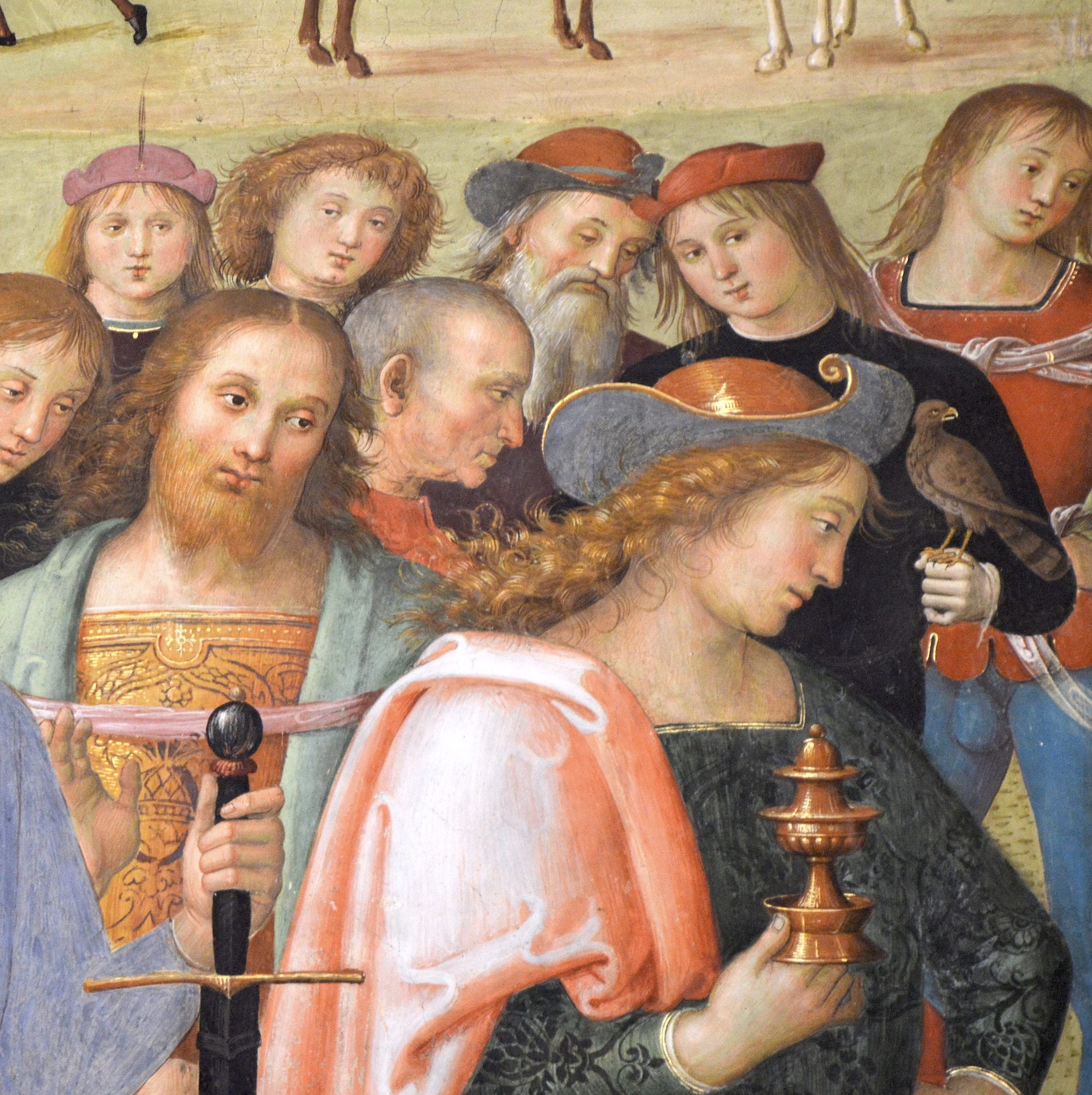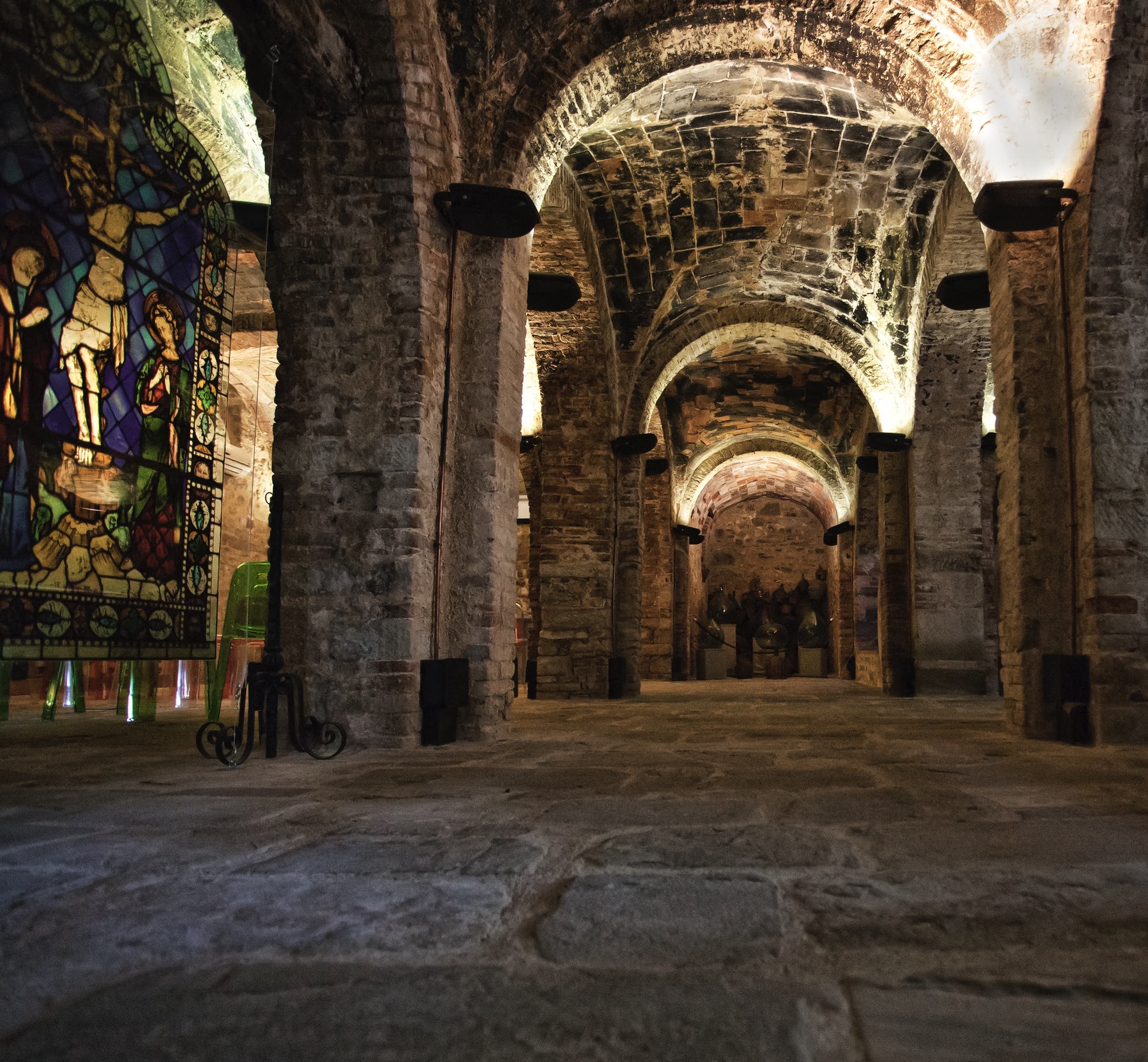ANTIQUARIUM
THE ANTIQUARIUM, WHICH IS ALSO WHERE THE INFO POINT OF CORCIANO IS LOCATED, HOSTS FINDINGS FROM THE PALEONTOLOGIC, PREHISTORIC AND CLASSICAL ERAS REDISCOVERED IN THE TERRITORY.
The Antiquarium hosts several archeological findings rediscovered in the territory and represents the importance of human presence in the region. The tools are displayed in classic exhibition itineraries, which analyze their role in the territory and surveil every object and their multiple fundamental aspects. The exhibition itinerary, chronologically divided into thematic sections, shows how men influenced the spaces where they lived in the past, their creations, their economy, their religion, their politics and their relationships with other people. The tour begins with the paleontologic section, with fossil findings of mesozoic ammonites of Migiana (early Jurassic era) and of Quaternary mammals of Ellera (early Pleistocene era), displayed on an updated instructional device, to show these two ancient and very important phases of the history of Corciano. The Augusto Mori collection, with its lithic artifacts found in the region, shows an interesting view over the prehistoric Umbria. The most important testimonies were discovered around Sant’Egidio (Assisi) and can be divided into two main groups: one belonging to the Upper Paleolithic, and the other to the Chalcolithic. During the Bronze Age the territory of Corciano was considered an important connection between Perugia and Lake Trasimeno, where many of these artifacts were discovered. In the early Iron Age, the so called “Villanovan Culture” began to take hold in Perugia and Lake Trasimeno, leaving an heritage of geometric decorations carved on vases and pots, to mark their different parts. The classic archeology section begins with a presentation of the Archaic period. Many bronze items from the Archaic period were fortuitously found, near Castel San Mariano, in april 1812, they could have been either the burial belongings or the direct property of some rich characters who lived there. The items were part of an impressive equipment for the preparation of food for banquets, there were also tools of personal use, metal coating foils for three carts, two currus and a carpentum, symbols of power and wealth, which the clandestine diggers sold, soon after the discovery, to the most important collectors of the time. The artifacts were later acquired by the Archeological Museum of Perugia and by other important Museums in Europe. Full size reconstructions of one of the two currus and of the carpentum are displayed in the Antiquarium. The Volpaie sarcophagus can be seen in the area dedicated to San Mariano, and it’s part of a type of monument made of fetid stone, a variety of limestone, common in the territories of Chianciano, Chiusi, Cetona and Sarteano. Various sarcophagi made of fetid stone can be found in inner Etruria in the Chiusi area, their production dates back to the end of the 6th century b.c., but most of them were made in the 5th century, and just a few between the end of the 4th and 3rd century. Then comes the shrines section, with a display of tiny votive bronze works and terracotta decorative elements. These shrines, usually found in the main connection routes and on top of small hills, were simple enclosures and altars dedicated to the deities, to whom they offered vows in exchange for health, fertility and livestock welfare. The Hellenistic Age is represented by the artifacts found in the Necropolis of Strozzacapponi and Fosso Rigo. Must see are the reconstructions of three tombs, with their funerary goods placed inside in their original position, and what was found inside the Tomba dei Letti Funebri: eight travertine urns with the typical polychromy of the time, ceramic and bronze parts of two funerary beds with their hypotetical reconstruction. Next is the Roman Age section, roman presence in the area was strong mainly due to the complex road system with the Via Amerina as axis. The etruscan customs and culture, rites and monuments remained unchanged until the Roman Empire completely triumphed over the territory in the 1st century b.c. Following the romanization of Corciano, its territory was progressively occupied and many villae, typical settlement structures, were built for both residential and production purposes. What is left of this period are small everyday items and tools, small portions of the settlements and two tombs with their funerary goods.
> OPENING TIMES
1 SEPTEMBER 15 JUNE
Everyday
10 a.m. – 1 p.m.| 3 p.m. – 6 p.m.
Closed on December 25
December 26 January 1: 3 p.m. – 6 p.m.
16 JUNE – 31 AUGUST
Everyday
10 a.m. – 1 p.m. | 4 p.m. – 7 p.m.
> RATES
Regular ticket
€ 3.00
Reduced ticket
€ 2.50
over 65 | free of charge under 14 and disabled
Reduced ticket for school groups
€ 2.00
free of charge for accompanying teachers
Reduced ticket for groups
€ 2.50 each, at least 20 people
4 Museums combined ticket
Full price
€ 7.00
Reduced
€ 5.00
over 65 and groups of 20+ people
> CONTACTS
Via Cornaletto 4/C- Corciano
T. 075 5188255
cultura@comune.corciano.pg.it









